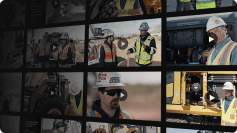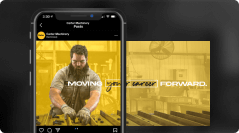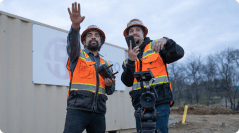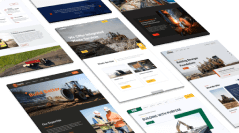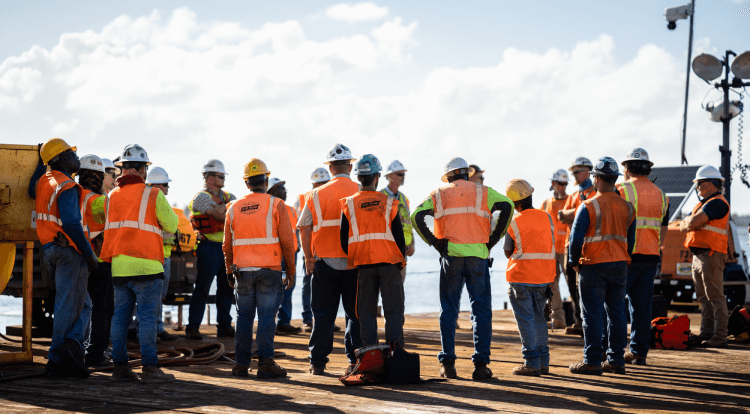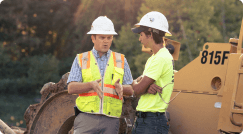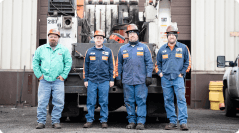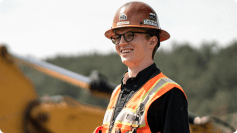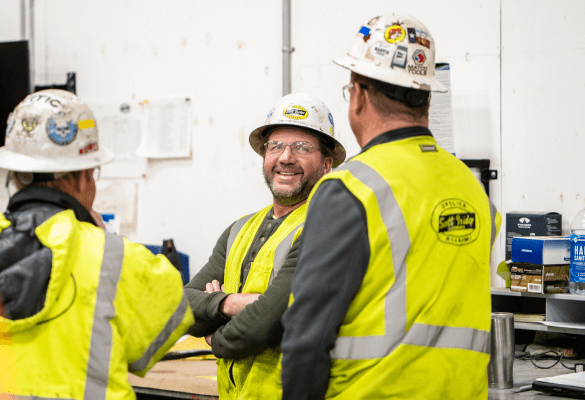10 Tips to Make Jobsites Safer
Written by Megan Hamilton
October 7, 2022
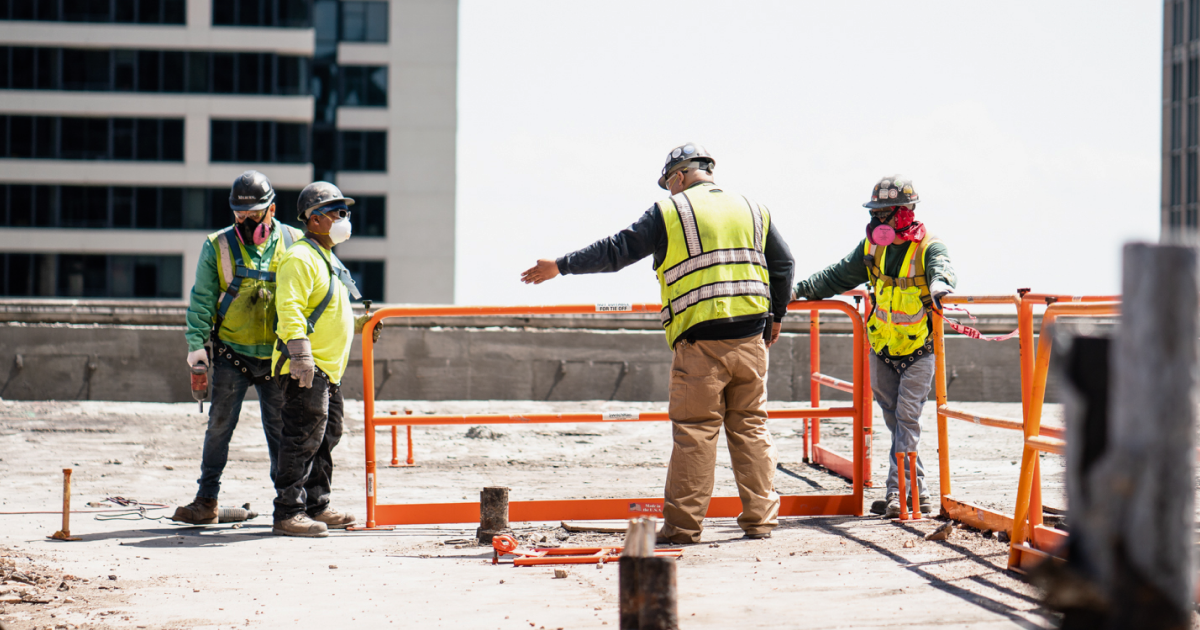
Safety is the most important intangible product on the jobsite.
Safe jobsites increase productivity by preventing slowdowns, stoppages, accidents, and injuries. They also create a collaborative environment where people communicate and solve potential issues together.
Being known for safety will help you attract talented workers because people want employers who care about their wellbeing. They’ll also be more loyal long-term since they know they’re safe with you.
In addition, safe jobsites help you build a good reputation—leading to more referrals and repeat business. When you’re productive, communicative, and careful, clients trust you to do a good job. They assume you care as much about the product as you do about safety. (And, of course, they’re right.)
You must eliminate jobsite safety issues to grow your business. To get started, follow these ten tips for making jobsites safer.
01Educate and equip foremen
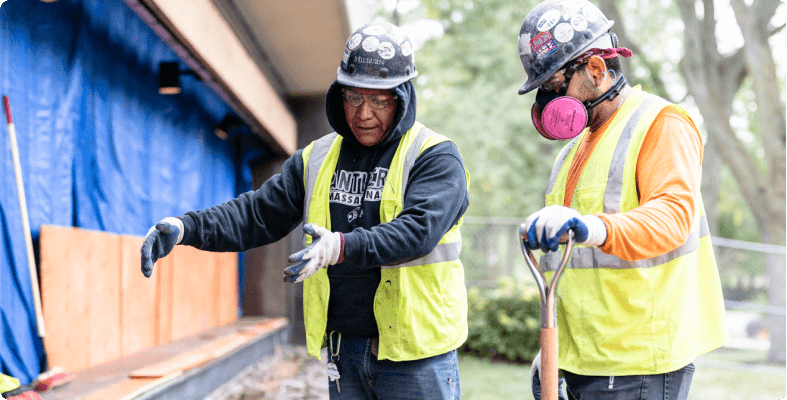
Foremen are responsible for how things go on the job—including safety. They must know how to stay safe and teach safety to their crews. However, most foremen are unequipped to do so.
People often believe leaders know how to teach, but that’s often untrue. You have to give foremen the training and tools they need to effectively educate their crews.
You can help by holding classroom sessions or crew huddles to teach foremen how to maintain a safe jobsite. Then, teach them how to share that knowledge with others. Give them access to training software and other resources, too—don’t just expect them to remember everything on their own.
02Train crew members
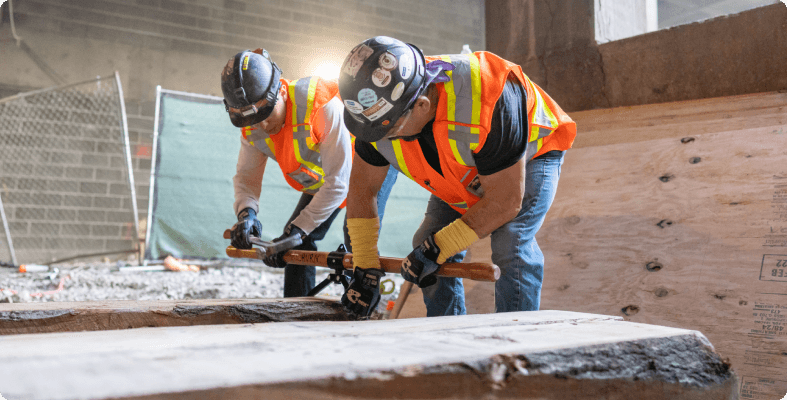
In addition to foremen, do you know who else is responsible for developing your crew? You. Crew members need safety training from you or your safety manager to reinforce the training they get from their foremen.
That may sound repetitive or unnecessary. However, safety training is worth repeating. Construction workers reported 165,300 injuries and 1,008 deaths on the job in 2020.1 Don’t let your crew members become part of that statistic.
You can reaffirm the lessons your foremen teach through classroom training and crew huddles. The more you can drive these points home, the safer your crews will be.
03Provide ongoing training and refreshers
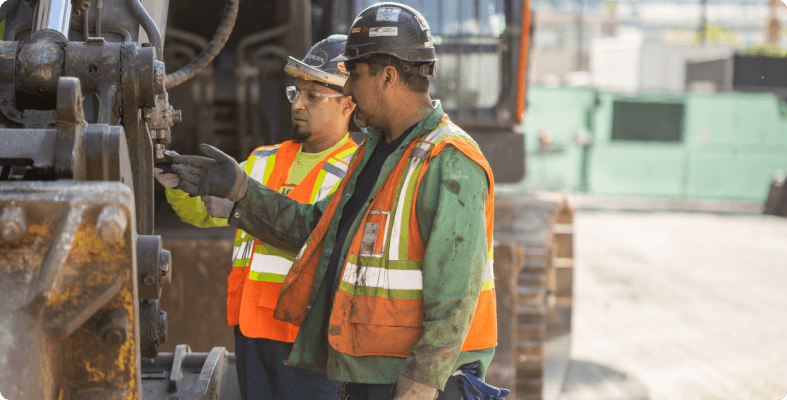
Maybe you taught a safety course within the past year. That’s great! Now, it’s time to do it again. The industry and its technology are constantly changing, so your crew members need ongoing training to stay safe in today’s Dirt World.
Plus, workers may forget some safety rules or take an unsafe shortcut because they think it “won’t be a big deal.” Ongoing training reminds your crew of the jobsite safety rules—and it reminds them that safety is a very big deal.
Repetition is crucial, and it doesn’t have to be boring. Good training software is beneficial for freshening up your curriculum because it uses engaging videos, quizzes, and sometimes your custom content to keep things exciting.
How often you repeat training subjects is up to you. You can constantly adjust the plan if you see that crew members need more training in one area than another.
04Give the whole crew leadership training
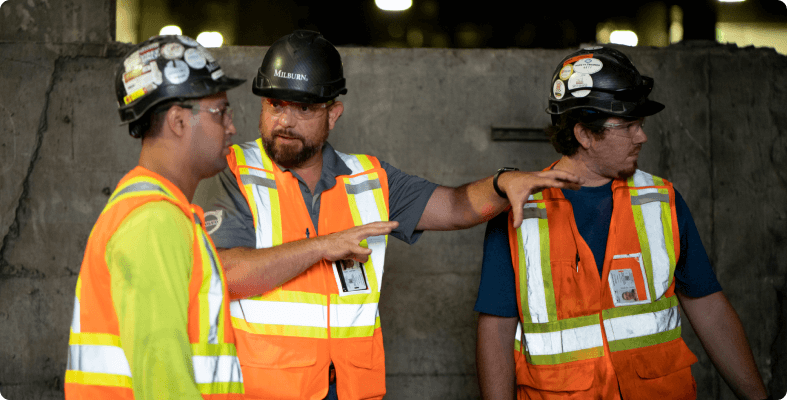
This may sound irrelevant but stick with us. Leaders don’t just hold a title or get paid more. They take ownership and action. They speak up. They get stuff done.
Guess what? That’s precisely what you want from your crew members. You want them to look for and fix safety issues on the jobsite. You want them to report hazards promptly. You want them to create a long-lasting product that’s safe to use.
Since you expect your crew members to act like leaders, it pays to give them leadership training. Teach them effective communication, so they know when and how to speak up about safety issues. Train them on responsibility so they’ll hold each other accountable. Show them what safety looks like so everyone has the mindset of a safety manager.
05Onboard new hires with safety training
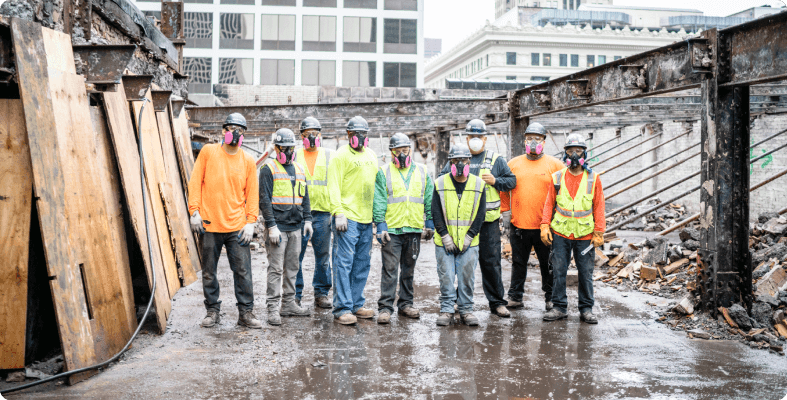
New hires need onboarding to learn about your company’s culture, mission, processes, and safety protocols.
Onboarding safety training is essential for new hires without experience. They’ve likely never worked around big iron or worked outdoors before.
They need to know how to stay safe by doing things like staying visible to operators and hydrated in hot weather. They also need to learn how to help keep other crew members safe by doing things like spotting for drivers. Finally, you must teach them how to work properly to be safe during and after construction.
New hires with prior industry experience may know many of those things. They’ll likely show up with a water bottle and steel-toed boots. But they still need onboarding to learn how to meet your safety standards.
Look for a “turnkey” onboarding program. In other words, you should be able to use it for all new hires regardless of role or experience. It should set clear safety standards for anyone entering the company.
06Talk to trade partners and vendors about safety
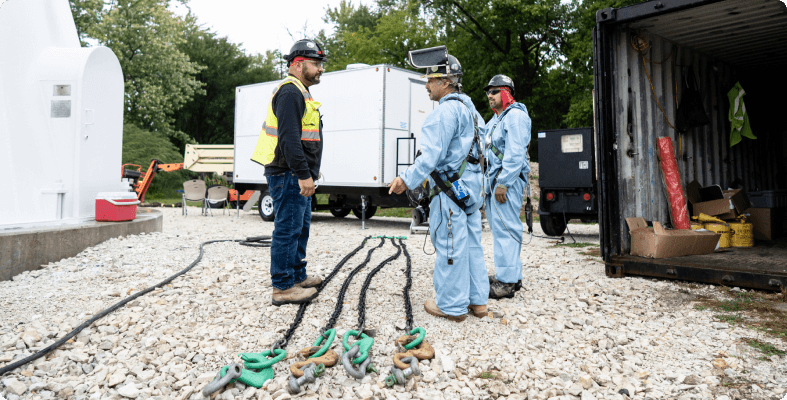
You’re not responsible for what safety standards your trade partners and vendors set for themselves. However, you are responsible for communicating with them. Here are some safety topics you can discuss:
- Let them know about any safety standards you want jobsite visitors to uphold.
- Talk about what your safety standards are, and ask about theirs. That opens a conversation to learn from each other. Respect their standards, and don’t expect them to adopt yours.
- Address safety concerns appropriately. If a trade partner or vendor does something unsafe, talk to the right person in the right way. Be humble and professional. Approach them with an attitude of, “How can we work together to make this jobsite safer for our crews?”
Raise mental health awareness
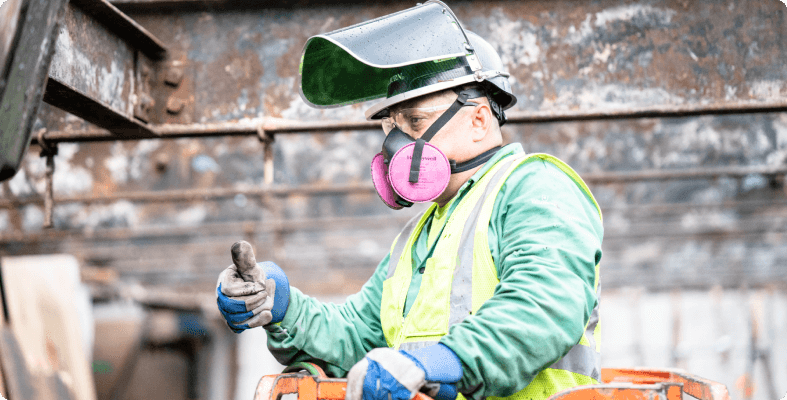
Recent studies show that construction and extraction workers are at higher suicide risk than workers in any other industry.2 That’s a shocking, tragic statistic—a sign of a more significant mental health crisis in the industry.
Thousands of people in the Dirt World cope with depression, anxiety, and other mental health struggles. Yet many business owners believe their crew members and leaders are okay. Why?
Because mental health has long been taboo, especially in blue-collar industries that value toughness and strength, your employees may be struggling without telling you. Knowing if people are okay when we don’t talk about mental health is tough.
Fortunately, you can help your team in two huge ways:
- Educate yourself on the state of mental health in the Dirt World. The more you know about what’s going on in the industry, the better prepared you are to help your employees become or stay well.
- Take a stand to prevent suicide in the industry. We recently partnered with the Construction Industry Alliance for Suicide Prevention (CIASP), and we’re learning so much from them! One key takeaway: Provide resources for your leaders and crew members so they can get—and give—help.
Offer balanced schedules

We talked recently about how to increase productivity in your construction business. Do you know what didn’t make the list? “Work your employees like dogs with long hours and crazy schedules!”
People are more likely to get injured or make dangerous mistakes on the job when they’re tired from irregular schedules or long hours.3
We know you have a busy season when you need all hands on deck, and days tend to run long. That’s understandable—especially if the weather is a factor.
However, this isn’t an either-or situation. You can keep your business highly productive and help your employees create better work-life balance. For instance, you can:
- Learn how to effectively recruit crew members, so you have more people to help out.
- Take people’s family situations—like new marriages or sick kids—into account and offer more flexibility to people dealing with significant life events.
- Give your team task-specific training to help them improve at their jobs, so they can get the work done in less time with fewer mistakes.
Consider your business needs and your crew’s needs, then look for ways you can balance them more effectively.
09Remind people of the “why” behind safety training
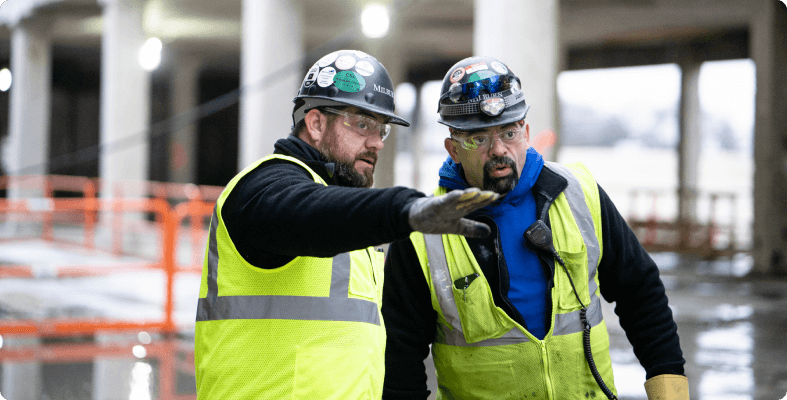
Sometimes, people feel like safety training is just an OSHA- or MSHA-mandated box to check. When that happens, leaders are unmotivated to put a good-faith effort into safety training. Employees are unmotivated to listen. (As soon as they hear “safety,” you can see their eyes glaze over.)
That’s nuts! Safety training is the granddaddy of all training. Without it, you won’t achieve maximum success in this industry. Period.
Think about it from a purely business perspective for a minute. You lose a ton of money when you don’t prioritize safety training. Here’s why:
- Safety hazards and accidents lead to slowdowns, rework, and stoppages. In that case, you’re losing revenue by the second.
- You’ll pay through the nose for workers’ compensation, health insurance, disability insurance, and other employee benefits that accidents or injuries can impact.
- Once you get a reputation for accidents and unsafe working conditions, employees will quit and find a safer job. High turnover will cost you thousands of dollars in lost productivity and recruitment expenses.
- You lose out on future business. Clients don’t like to see unnecessary work slowdowns or worker injuries, so they may not give you repeat business or referrals.
- You waste time and money on whatever inadequate safety training you are trying to use.
Now let’s set the business aside for a minute.
Not prioritizing safety training is lousy leadership. You have employees who count on you to give them the best possible working environment so they can give you their best possible effort. You should uphold your end of the bargain.
You must help your crew members understand the importance of safety. The reality is, many of them don’t think they’ll be the one to get hurt. They don’t believe the “little” thing they let slide could cause someone else to get injured, either.
You have to help them change that mindset. Help them understand that safety training is what gets them home to their loved ones—the same loved ones they’re working to support.
So make safety training important at your company. Make it part of your culture. And make sure everyone knows it.
10Choose a centralized training platform
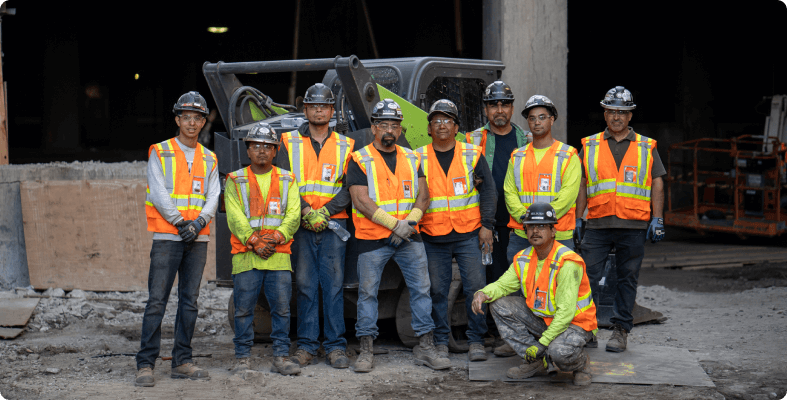
You’re bought in on the idea of safety training; now you just need to figure out how to implement it. Whether you create your own highly customized curriculum, use training software, or combine the two, you need a good training management system (TMS).
The TMS offers a centralized platform where you or your safety manager can assign training content to every jobsite. This helps you standardize training among all your crews, and it helps your foremen teach the right thing at the right time.
Many TMS have communication features that help address safety issues as soon as they happen. For instance, a foreman can create a video about something unsafe he saw on his jobsite and share it so the crew can learn how to correct that issue. Or the foreman could message the safety manager, who then assigns a training video on the topic.
A good TMS helps your safety manager be everywhere at once. You can even find a platform with training software built in, so you can start safety training immediately.
Learn how BuildWitt Training gives you the TMS and software you need to improve jobsite safety.


